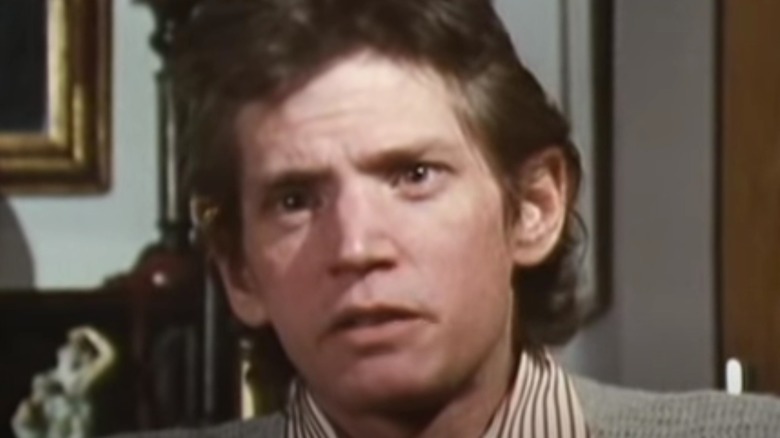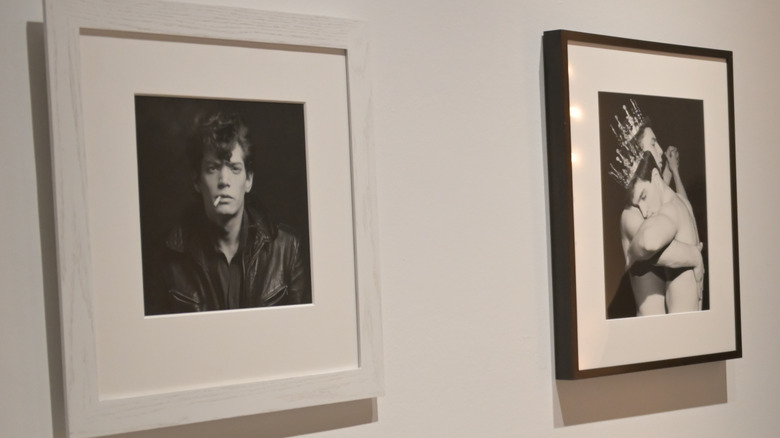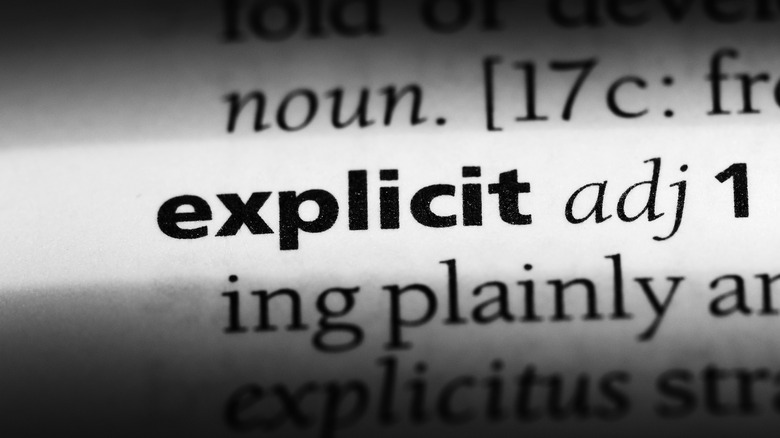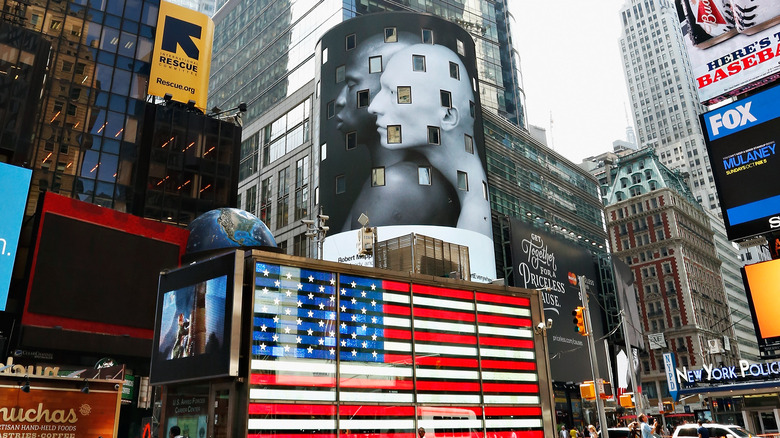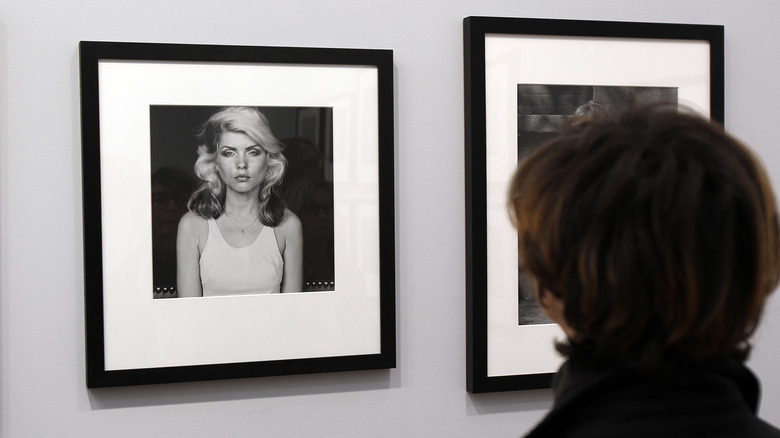How Robert Mapplethorpe Sparked Outrage Even After His Death
At this point in time, artists have pushed the lever of audacity practically off its axel. Provocative conceptions of the creative mind have always been a hot point of discussion amongst art aficionados and adversaries alike, but the shock factor by and large seems to be a bit harder to achieve these days. Perhaps it's because we've seen almost all there is to see in the way of "elegant vulgarity" if you will, but once upon a time, the threshold for what was tolerated by certain factions of society was much lower than it is today.
In a letter addressed to the late Robert Mapplethorpe, punk rocker Patti Smith declared, "You drew me from the darkest period of my young life, sharing with me the sacred mystery of what it is to be an artist. I learned to see through you and never compose a line or draw a curve that does not come from the knowledge I derived in our precious time together."
The words almost read like a preemptive eulogy, as Mapplethorpe would die before he'd ever get the chance to respond (via Far Out Magazine). Smith's relationship with him was emblematic of the unparalleled devotion his admirers at large held for him and his work, which emulated themes of sex, violence, faith, and deviance from propriety through the medium of photography. To this day, Robert Mapplethorpe and his contributions to art are revered with sacred grace by a community of creatives who continue to honor and celebrate him.
Common themes and subjects in Mapplethorpe's work
Any art gallery that featured Robert Mapplethorpe's photographs back in the 1980s appeared before spectators like a sacristy of hedonistic, majestic perversity; a temple of worship for regal deviants and somber eclectics worldwide. His photos often displayed subjects (almost always in black and white) engaging in S&M acts and sexual fantasies by themselves or with one another. The naked/mostly naked human body, adorned with various auxiliaries and eccentric props, was the prime subject of his portraits, and he used it to boundlessly explore existential themes surrounding sex and spirituality. Appropriately, he referred to the photos as "sex pictures" (per The Guardian).
Mapplethorpe once declared, "Whenever you make love to someone, there should be three people involved — you, the other person, and the devil" (via Brainy Quote). You can choose to unpack that however you like, but it's probably safe to say that anyone who sports such a philosophy is bound to arouse some undesirable opposition from certain people after channeling it into a public showcase. For as many individuals that adored Robert Mapplethorpe, there was certainly no shortage of naysayers who otherwise detested the controversial work he prided himself on. In fact, even after his untimely and tragic death on March 9th of 1989, the photographer and societal provocateur managed to summon a significant amount of unrest and conflict between people who vehemently disagreed with one another on the subject of his art and its proper place in the world (via The Guardian).
Politicians tried to shut down Mapplethorpe's exhibits
Shortly after dying from AIDS in 1989 at the age of 42 (per The New York Times), Robert Mapplethorpe's photographs were scheduled to appear in a large exhibit in New York City at The Whitney Museum. Christina Orr-Cahill, director of The Corcoran School of Arts & Design, resolved to cancel the showcase after surmounting scrutiny and opposition from The Meese anti-pornography commission continued to hurl itself at her. Mapplethorpe's exhibit was then rescheduled to appear in Cincinnati, Ohio at The Contemporary Arts Center, but it was once again facing resistance from the city's presiding government entities and Citizens for Community Values who took issue with its controversial subject matter. Nevertheless, plans to open The Perfect Moment (the exhibit's name) persisted, though disapproval and antipathy from critics only became more enflamed, according to The Guardian.
Protests from both fans of Mapplethorpe and those who wanted to keep his work away from the public eye broke out across Cincinnati. The opposition evoked the dialogue of Ohio's obscenity laws while art lovers gathered at The Contemporary Arts Center's doorstep on the day of the exhibit's opening (April 7, 1990). Eventually, The Perfect Moment would complete its tour with 80,000 attendees coming to view the controversial art over the course of its reign. However, the deceased Robert Mapplethorpe and his troupe of noble disciples weren't out of the woods yet. Several indictments had been delivered on the day of The Perfect Monument's opening in Cincinnati, and in the ensuing months, a trial was held (per The Guardian).
Legal battles over Mapplethorpe's The Perfect Moment
Dennis Barrie, head director of the Contemporary Arts Center, was the prime subject of the charges brought against The Perfect Monument and subsequent exhibition of Robert Mapplethorpe's photographs. A panel of eight jurors were compiled to weigh the matter and determine whether or not Barrie and his institution should be delivered a conviction on behalf of obscenity laws and the alleged violation of them. The issue of homosexuality and S&M culture was raised as the prosecution asserted that Mapplethorpe's work constituted vulgar pornography and dangerously explicit material. Alternatively, Barrie's defense team countered with the notion that a museum is an institution that has the right to display art in all formats and therefore could not be charged with obscenity (via The Washington Post).
Five photographs, two of which depicted nude children, were brought forward by the prosecution as evidence. The Perfect Moment featured 115 other pictures from Robert Mapplethorpe's portfolio, though they were discarded by the court and only a select few were presented before the court. After the dust had settled and each side had provided their argument, the jurors were left to their decision. It took less than two hours for them to decide that Dennis Barrie and the CAC should not be convicted of obscenities and that Robert Mapplethorpe's art was indeed eligible for display, and the issue was thence laid to rest (per The Guardian).
The 25th Anniversary Symposium of The Perfect Moment
In October of 2015, a jubilee commemorating 25 years since the ruling of the Cincinnati jury was held at the Contemporary Arts Center. The exhibit was called "Mapplethorpe +25" and was devoted to late artist and his posthumous triumph over those staunch adversaries of his work who combated his successors in 1990. Several of his pieces were displayed and a panel of commentators discussed Mapplethorpe's legacy, the grand evolution of his work/the ideas it embodies, and the tumultuous scruple that took place between his advocates and agents of the state 25 years prior.
Around the time of "Mapplethorpe +25"'s opening, Raphaela Platow, who succeeded Dennis Barrie as director of the Contemporary Arts Center stated, "The majority of people decided it was really important to show works of art even if they challenge a certain percentage of the population," and furthermore described Mapplework's art as "beautiful but can potentially be difficult to look at. This is where I personally love art because it challenges me and makes me consider other people's point of view" (via The Washington Post). Mapplethorpe's portraits continue to appear in galleries across the world and predominate a good portion of the fine art market. In 2017, one of his self-portraits sold at auction in England for over half-a-million dollars (per Heritage Auctions).
